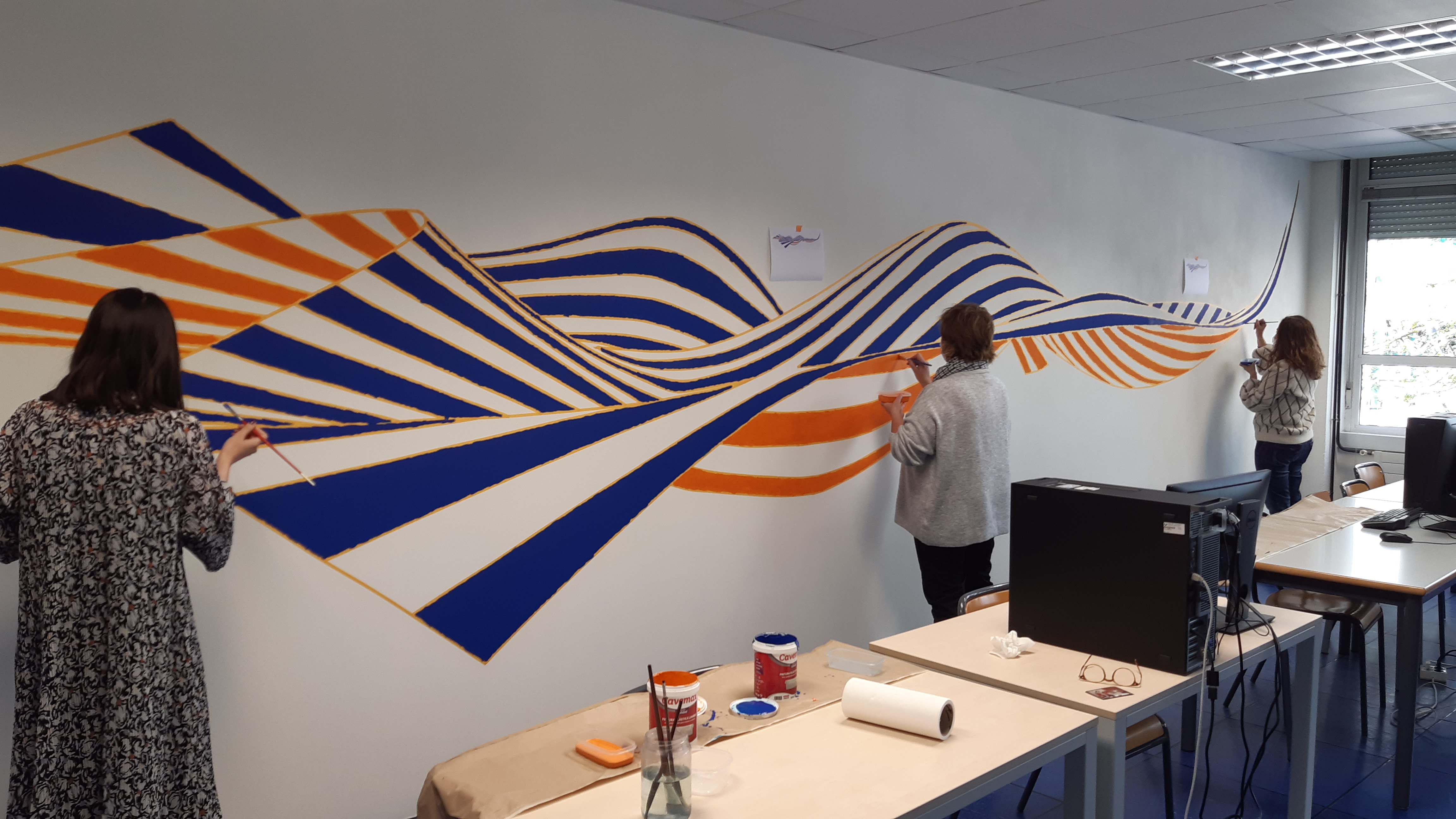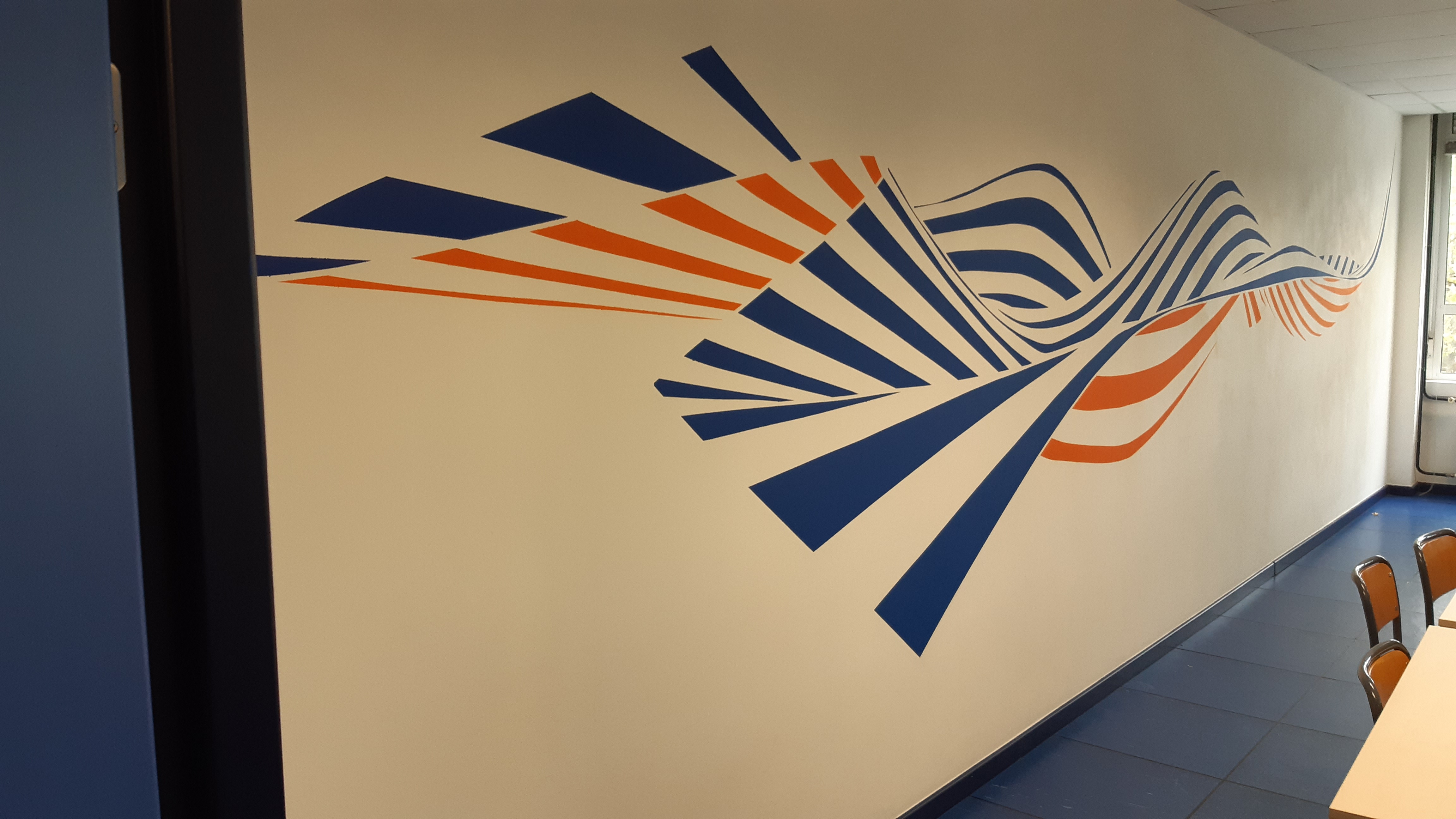Wall Drawing 2022.Sydney
Installation

- Title: Wall Drawing 2022.Sydney
- Art and Project: Juan Carlos Olabe and Xabier Basogain
- Collaborators: (see list below)
- Technique: Acrylic paint on wall
- Size: 825 cm x 200 cm
- Date: April 2022
- Location: Informatic Room 1.3
Wall Drawing 2022.Sydney is a work of art in which a minimalist language is presented to give the visitor/spectator the opportunity to explore three-dimensional parametric surfaces known in the world of geometry as manifolds. A manifold is a curved three-dimensional surface.
Manifolds in contemporary art: two of the most important representatives in the exploration of manifolds in contemporary art are Frank Gehry in architecture, and Richard Serra in sculpture. Unlike flat surfaces (traditional walls, floors and ceilings) manifolds are not representable in the Euclidean geometry studied in school. However, nature is full of examples of manifolds: an apple, a dolphin, a cloud, desert dunes, ocean waves, a ship's sail, the earth, the moon, the human body, etc.
Gehry and Serra take advantage of recent technologies to study and create this type of surface. This work studies these curved surfaces in their representation in the world of painting.
Language: in this work we introduce a minimalist language to explore the possibilities of artistic expression in the world of manifold surfaces. The language consists of the representation of rectangular strips of two colors, blue and orange. All the surfaces of this Wall Drawing are constructed by using these rectangular stripes. There are a total of 56 non-overlapping fringes.
In this Wall Drawing, the visual system has to process the stripes that are perceived as non-rectangular and decipher the curved surface that has distorted them so that they are perceived in such a way. (For example: when one sees the train tracks as two lines that tend to join on the horizon, the visual system must process this image and determine what type of surface, in this case the terrain of the tracks, can modify the perception some parallel tracks).
The advantage of representing a surface through this minimal language is equivalent to that of studying a musical composition through its score: it allows us a level of abstraction that is essential for learning and creativity. This is the reason why musicians use this minimal language of musical representation.
The differential and integral essence of the images: the images that represent the natural world through geometric shapes and structures have a differential and integral treatment. In a discretization process, the three-dimensional structure of this curved surface is broken down into 56 primitive elements (one-tone color fringes).
In the integration process, a discrete set of primitive elements (blue and orange stripes) are combined to form a superior structure (valleys, caves, dunes, hills, waves, etc.). This artistic experience conveys to the viewer a fundamental idea that they will never forget: everything is a set of parts, and a set of parts form a whole.
The role of the white color: the blue and orange stripes constitute approximately 50% of the curved surfaces. The other 50% is provided by the human visual system incorporating the white color of the wall into the image represented. The viewer automatically and effortlessly discriminates between the white color that belongs to the curved surface and the white color that belongs to the background of the wall. This assignment of the color white to one environment or another is a fundamental element of language. The organization of blue and orange stripes is such that it indicates to the viewer that they are opaque (they prevent seeing what is behind them). The same structure indicates to the viewer that there must be white stripes that prevent seeing what is behind them.























